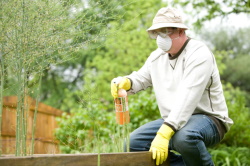Introduction
In any type of emergency situation, the capacity to evaluate a casualty's responsiveness can mean the difference between life and fatality. Recognizing exactly how to perform this essential analysis is important for anybody involved in Basic Life Support (BLS) training. This short article explores The Importance of Inspecting Responsiveness: A BLS Essential, discovering its relevance within the broader context of standard vs advanced life support techniques, healthcare facility codes and methods, and much more.
Table of Contents
Understanding Responsiveness in BLS
- What is Responsiveness? Why is it Essential in Emergencies?
- Overview of Basic Life Support Transitioning to Advanced Life Support
- Step-by-Step Guide Common Blunders to Avoid
- Signs of No Breathing What to Do Next
- Understanding AEDs When to Make use of an AED
- Benefits of BLS Training How to Get Certified
- The Significance of Teamwork Recommended Compression Rates
- Techniques for Staying Calm The Role of Composure in Reliable Response
Understanding Responsiveness in BLS
What is Responsiveness?
Responsiveness describes a person's capability to react to stimulations, such as spoken commands or physical touch. In a clinical emergency, evaluating responsiveness assists figure out the urgency and kind of care required.

Why is it Critical in Emergencies?
Checking responsiveness permits responders to promptly assess a sufferer's problem, leading subsequent actions such as calling for assistance or carrying out CPR. Fundamentally, it establishes the phase for all more interventions.
Basic vs Advanced Life Support
Overview of Basic Life Support
Basic Life Support (BLS) encompasses vital techniques focused on sustaining life up until advanced clinical help gets here. It consists of checking responsiveness, carrying out mouth-to-mouth resuscitation, and making use of an Automated External Defibrillator (AED).
Transitioning to Advanced Life Support
Advanced Life Assistance (ALS) entails much more innovative clinical interventions that trained experts perform, such as providing medications and advanced respiratory tract administration techniques.
How to Check Responsiveness
Step-by-Step Guide
Approach the private calmly. Gently touch their shoulder and talk loudly but clearly. Observe their action; if there's no reaction, proceed with additional assessments.Common Blunders to Avoid
- Failing to examine breathing after evaluating responsiveness. Not asking for emergency solutions without delay if there is no response.
Identifying No Breathing
Signs of No Breathing
In some instances, an individual may be unresponsive yet still breathing improperly or not whatsoever. Seek:
- Absence of breast movement. No audible breaths.
What to Do Next
If you identify no breathing:
Call emergency services immediately. Begin CPR without delay.Public Defibrillator Usage
Understanding AEDs
An Automated External Defibrillator first aid education for childcare (AED) is a mobile gadget designed to evaluate heart rhythms and provide an electric shock when necessary.
When to Make use of an AED
Use an AED when:
- The individual is less competent and not breathing. Medical professionals are on their means yet instant activity is required.
BLS Accreditation Importance
Benefits of BLS Training
Obtaining BLS certification outfits individuals with important skills needed during emergency situations, enhancing their self-confidence in responding effectively.
How to Get Certified
Certification training courses are offered via various organizations such as the American Heart Organization (AHA) or Red Cross-- choose one that fits your schedule!
Taking Switches on Compressions
The Value of Teamwork
When multiple responders exist, taking turns on compressions assists prevent tiredness and makes sure top quality upper body compressions throughout the resuscitation process.
Recommended Compression Rates
The optimal compression rate during mouth-to-mouth resuscitation is 100-120 compressions per minute; ensuring this uniformity can significantly improve survival chances.
Maintaining Calmness Throughout Emergencies
Techniques for Remaining Calm
Staying calm throughout a dilemma is crucial-- not just for your very own efficiency yet likewise for those around you who might be seeking management during chaos.

Take deep breaths before coming close to the situation. Focus on jobs instead of feelings; this will aid you stay centered.
The Duty of Calmness in Reliable Response
Your attitude can substantially affect exactly how others react-- keeping calmness motivates teamwork and instills self-confidence amongst spectators aiding with care.
Conclusion
In recap, Have a peek here comprehending exactly how and why we check responsiveness forms the backbone of efficient BLS training and interventions during emergencies. Whether you're navigating standard vs innovative life support situations or using public defibrillators successfully, every second matters when lives go to stake-- making knowledge concerning these procedures invaluable.
FAQs
Q1: What ought to I do if a person is unresponsive?
A1: Examine their responsiveness by gently tapping them and screaming their name; if Additional hints they are less competent, call emergency situation solutions immediately.
Q2: Exactly how does checking responsiveness vary from other assessments?

Q3: Is BLS certification needed for everyone?
A3: While not necessary for everyone, acquiring BLS accreditation can empower you with critical abilities that could save lives in emergencies.
Q4: Can I use an AED on a person that reveals signs of breathing?
A4: No, only utilize an AED if the person is unresponsive and not breathing generally; ensure appropriate assessment first!
Q5: How usually must I exercise my mouth-to-mouth resuscitation skills?
A5: It's recommended to freshen your mouth-to-mouth resuscitation abilities via normal training sessions at the very least every 2 years or faster if you feel unclear concerning your abilities.
Q6: Does maintaining composure really influence emergency outcomes?
A6: Absolutely! Composed responders tend to act much more effectively which favorably affects both team dynamics and person outcomes.
By prioritizing the value of inspecting responsiveness within Basic Life Support training frameworks, we embrace our duty as potential lifesavers-- outfitting ourselves with expertise that can transform minutes of situation right into possibilities for hope and recovery!